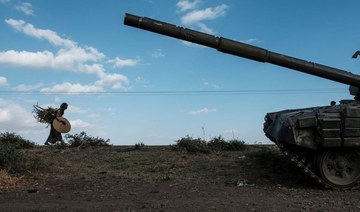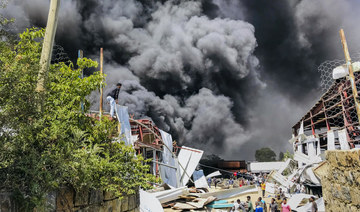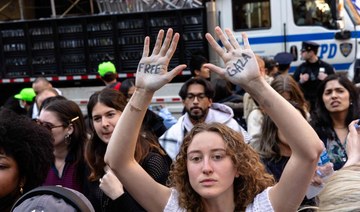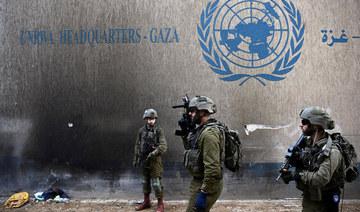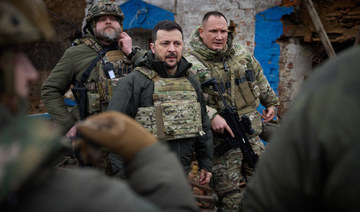NAIROBI, Kenya: The findings of the only human rights investigation allowed in Ethiopia’s blockaded Tigray region will be released Wednesday, a year after war began there. But people with knowledge of the probe say it has been limited by authorities who recently expelled a UN staffer helping to lead it.
And yet, with groups such as Human Rights Watch and Amnesty International barred from Tigray, along with foreign media, the report may be the world’s only official source of information on atrocities in the war, which began in November 2020 after a political falling-out between the Tigray forces that long dominated the national government and Prime Minister Abiy Ahmed’s current government. The conflict has been marked by gang rapes, mass expulsions, deliberate starvation and thousands of deaths.
The joint investigation by the UN human rights office and the government-created Ethiopian Human Rights Commission, or EHRC, is a rare collaboration that immediately raised concerns among ethnic Tigrayans, human rights groups and other observers about impartiality and government influence.
In response to questions from The Associated Press, the UN human rights office in Geneva said it wouldn’t have been able to enter Tigray without the partnership with the rights commission. Although past joint investigations occurred in Afghanistan and Uganda, the UN said, “the current one is unique in terms of magnitude and context.”
But Ethiopia’s government has given no basis for expelling UN human rights officer Sonny Onyegbula last month, the UN added, and without an explanation “we cannot accept the allegation that our staff member ... was ‘meddling in the internal affairs’ of Ethiopia.”
Because of those circumstances, and the fact that the UN left the investigation to its less experienced regional office in Ethiopia, the new report is “automatically suspect,” said David Crane, founder of the Global Accountability Network and founding chief prosecutor for the Special Court for Sierra Leone, an international tribunal.
“What you need when you go into an atrocity zone is a clean slate so outside investigators can look into it neutrally, dispassionately,” Crane said. “You want to do these things where you don’t build doubt, distrust from the beginning,” including among people interviewed.
The investigation might be the international community’s only chance to collect facts on the ground, he said, but because of its setup, it may disappear “in the sands of time.”
People close to the investigation, speaking on condition of anonymity for fear of retaliation, asserted that the head of the Ethiopian Human Rights Commission, Daniel Bekele, underplayed some allegations that fighters from the country’s Amhara region were responsible for abuses in Tigray and pressed instead to highlight abuses by Tigray forces.
That’s even though witnesses have said the perpetrators of most abuses were soldiers from neighboring Eritrea, Ethiopian forces and Amhara regional forces.
In response to AP’s questions, Bekele asserted his commission’s independence, saying it is “primarily accountable to the people it is created to serve.” Attempts to influence the investigation, he added, can come from ”many directions” in such a polarized environment.
Bekele said he and the commission have consistently cited “serious indications that all parties involved in the conflict have committed atrocities.”
Observers say a major shortcoming of the investigation is its failure to visit the scene of many alleged massacres in Tigray, including the deadliest known one in the city of Axum, where witnesses told the AP that several hundred people were killed.
Bekele said the investigation lacked the support of the Tigray authorities now administering the region after Tigray forces retook much of the area in June, about midway through the joint team’s work.
The UN human rights office, however, said the government’s subsequent severing of flights and communications from Tigray during the planned investigation period made it difficult to access key locations, both “logistically and from a security point of view.”
Even the interim Tigray authorities hand-picked by Ethiopia’s government to run the region earlier in the war rejected the joint investigation, its former chief of staff, Gebremeskel Kassa, told the AP.
“We informed the international community we wanted an investigation into human rights but not with the EHRC because we believe this is a tool of the government,” he said.
The UN has said Ethiopia’s government had no say in the report’s publication, though it was given the chance to read the report in advance and to point out “anything it believes to be incorrect.”
Late last week, Ethiopia’s government and a diaspora group released the results of their own investigations focusing on alleged abuses by Tigray forces after they entered the neighboring regions of Amhara and Afar four months ago in what they called an effort to pressure the government to end its blockade on Tigray.
The ministry of justice said it found 483 non-combatants were killed and 109 raped in parts of Amhara and Afar that were recaptured by federal forces in recent weeks. It also found “widespread and systematic looting” of schools, clinics, churches, mosques and aid groups’ offices.
A separate report by the Amhara Association of America said it found that 112 people were raped in several districts covered by the ministry’s findings. The diaspora group drew on data from offices of women’s and children’s affairs as well as interviews with witnesses, doctors and officials.
The diaspora group asserted that the Tigray forces “committed the rapes as revenge against ethnic Amharas, whom they blame as responsible for abuses in their home region.”
The spokesman for the Tigray forces, Getachew Reda, said the allegations aren’t worth “the paper they’re written on.” Accusations of rapes and killings by Tigray forces are “absolutely untrue, at least on a level these organizations are alleging,” he said.
Ethiopia tried to limit rare UN report on Tigray war abuses
https://arab.news/ry4b8
Ethiopia tried to limit rare UN report on Tigray war abuses
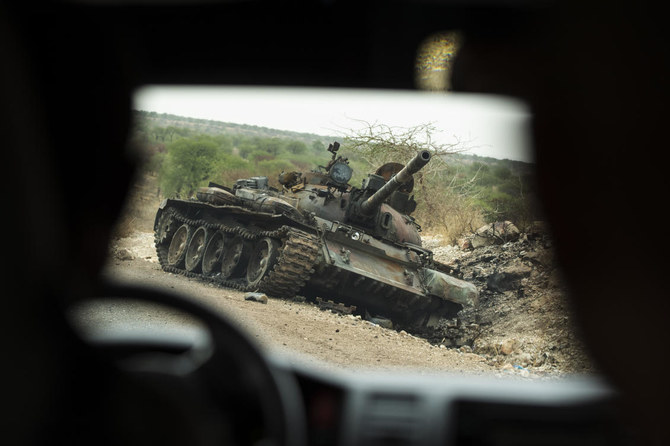
- Witnesses have said the perpetrators of most abuses were soldiers from neighboring Eritrea
- A report by the Amhara Association of America said it found that 112 people were raped in several districts covered by the ministry’s findings
Togo ruling party wins sweeping majority in legislative poll, final provisional results show
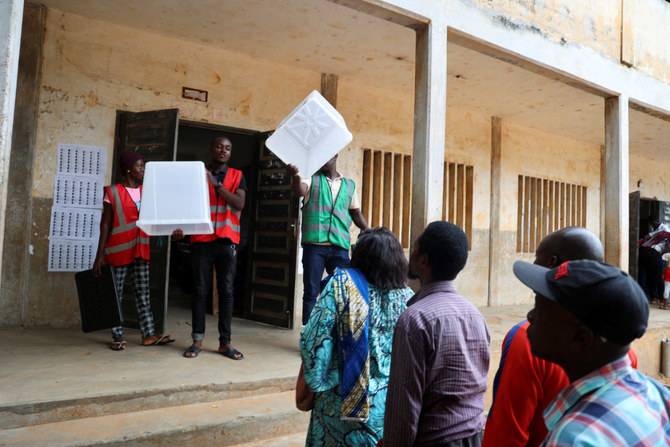
- The UNIR party's victory follows the approval of controversial constitutional reforms that could extend President Gnassingbe's 19-year rule
- Under the new charter, the president will be elected by parliament instead of by universal suffrage
LOME: Togo’s ruling party has won 108 out of 113 seats in parliament, according to the final provisional results of last month’s legislative election announced on Friday.
The sweeping majority secured by President Faure Gnassingbe’s UNIR party follows the approval of controversial constitutional reforms by the outgoing parliament that could extend his 19-year rule.
The new charter adopted in March also introduced a parliamentary system of government, meaning the president will be elected by parliament instead of by universal suffrage.
Opposition parties were hoping to gain seats in the April 29 vote to enable them to challenge the UNIR party after they boycotted the last legislative poll and left it effectively in control of parliament.
The election had been delayed twice because of a backlash from some opposition parties who called the constitutional changes a maneuver to allow Gnassingbe to rule for life.
Constitutional amendments unanimously approved in a second parliamentary vote earlier in April shortened presidential terms to four years from five with a two-term limit.
This does not take into account the time already spent in office, which could enable Gnassingbe to stay in power until 2033 if he is re-elected when his mandate expires in 2025.
Anti-war protest ruffles University of Michigan as demonstrations collide with graduation season

- Israel has killed more than 34,000 Palestinians, according to Gaza’s Health Ministry
- Tent encampments of protesters calling on universities to stop doing business with Israel or companies they say support the war in Gaza have spread across campuses nationwide in recent weeks in a student movement unlike any other this century
NEW YORK: Protesters chanted anti-war messages and waved Palestinian flags during the University of Michigan’s commencement Saturday, as student demonstrations against the Israel-Hamas war collided with the annual pomp-and-circumstance of graduation season at American universities.
The protest happened at the beginning of the event at Michigan Stadium in Ann Arbor. About 75 people, many wearing traditional Arabic keffiyeh along with their graduation caps, marched up the main aisle toward the graduation stage.
They chanted “Regents, regents, you can’t hide! You are funding genocide!” while holding signs, including one that read: “No universities left in Gaza.”
Overhead, planes flew competing messages. One read: “Divest from Israel now! Free Palestine!” The other read: “We stand with Israel. Jewish lives matter.”
Officials said no one was arrested, and the protest didn’t seriously interrupt the nearly two-hour event, which was attended by tens of thousands of people, some of them waving Israeli flags.
State police prevented the demonstrators from reaching the stage and university spokesperson Colleen Mastony said public safety personnel escorted the protesters to the rear of the stadium, where they remained through the conclusion of the event.
“Peaceful protests like this have taken place at U-M commencement ceremonies for decades,” she added.
US Navy Secretary Carlos Del Toro paused a few times during his remarks, saying at one point, “Ladies and gentlemen, if you can please draw your attention back to the podium.”
Before he administered an oath to graduates in the armed forces, Del Toro said they would “protect the freedoms that we so cherish,” including the “right to protest peacefully.”
The university has allowed protesters to set up an encampment on campus but police assisted in breaking up a large gathering at a graduation-related event Friday night, and one person was arrested.
Michigan was among the schools bracing for protests during its commencement ceremonies this weekend, including Indiana University, Ohio State University and Northeastern University in Boston. Many more are slated in the coming weeks.
At Indiana University, protesters were urging supporters to wear their keffiyehs and walk out during remarks by President Pamela Whitten on Saturday evening. The campus in Bloomington, Indiana, has designated a protest zone outside Memorial Stadium, where the ceremony is set to take place.
Tent encampments of protesters calling on universities to stop doing business with Israel or companies they say support the war in Gaza have spread across campuses nationwide in recent weeks in a student movement unlike any other this century. Some schools have reached agreements with the protesters to end the demonstrations and reduce the possibility of disrupting final exams and commencements.
Many encampments have been dismantled and protesters arrested in police crackdowns.
The Associated Press has recorded at least 61 incidents since April 18 where arrests were made at campus protests across the US More than 2,400 people have been arrested on 47 college and university campuses. The figures are based on AP reporting and statements from universities and law enforcement agencies.
At Princeton, in New Jersey, 18 students launched a hunger strike in an effort to push the university to divest from companies tied to Israel.
Senior David Chmielewski, a hunger striker, said in an email Saturday that the latest protest started Friday morning with participants consuming water only.
He said the hunger strike will continue until university administrators meet with students about their demands, which include amnesty from criminal and disciplinary charges for protesters.
Other demonstrators are participating in “solidarity fasts” lasting 24 hours, he said.
Princeton students set up a protest encampment and some held a sit-in at an administrative building this week, leading to about 15 arrests.
Students at other colleges, including Brown and Yale, launched similar hunger strikes earlier this year before the more recent wave of protest encampments.
In other developments Saturday, police broke up a demonstration at the University of Virginia. Campus police called it an “unlawful assembly” in a post on the social platform X.
Footage from WVAW-TV showed police wearing tactical gear removing protesters from an encampment on the Charlottesville campus. Authorities have not said how many people were arrested.
Meanwhile near Boston, students at Tufts University peacefully took down their protest encampment without police intervention Friday night.
Officials with the school in Medford, Massachusetts, said they were pleased with the development, which wasn’t the result of any agreement with protesters. Protest organizers said in a statement that they were “deeply angered and disappointed” that negotiations with the university had failed.
The protests stem from the Israel-Hamas conflict that started on Oct. 7 when Hamas militants attacked southern Israel, killing about 1,200 people, mostly civilians, and taking roughly 250 hostages.
Vowing to destroy Hamas, Israel launched an offensive in Gaza that has killed more than 34,500 Palestinians, around two-thirds of them women and children, according to the Health Ministry in the Hamas-ruled territory. Israeli strikes have devastated the enclave and displaced most of Gaza’s inhabitants.
US blames Rwanda for deadly attack on displaced camp in DR Congo

- DR Congo government spokesman Patrick Muyaya on Friday had also accused “the Rwandan army and its M23 terrorist supporters” of being responsible in a statement on X, the former Twitter
WASHINGTON: The United States has accused Rwanda of involvement in a deadly attack on a camp for displaced people in the eastern Democratic Republic of Congo, a claim dismissed as “absurd” by Kigali on Saturday.
At least nine people were killed in blasts on Friday in the camp on the outskirts of the city of Goma, local sources said.
“The United States strongly condemns the attack (Friday) from Rwanda Defense Forces and M23 positions on the Mugunga camp for internally displaced persons in eastern Democratic Republic of the Congo,” State Department spokesman Matthew Miller said in a statement.
Miller said the United States was “gravely concerned” by the expansion in DR Congo of Rwandan forces and the M23, a mostly Tutsi group that resumed its armed campaign in the vast, long turbulent DR Congo in 2021.
“It is essential that all states respect each other’s sovereignty and territorial integrity and hold accountable all actors for human rights abuses in the conflict in eastern DRC,” he said.
DR Congo government spokesman Patrick Muyaya on Friday had also accused “the Rwandan army and its M23 terrorist supporters” of being responsible in a statement on X, the former Twitter.
Rwandan government spokesperson Yolande Makolo described the US comments as “ridiculous,” in a post on X.
“How do you come to this absurd conclusion? The RDF, a professional army, would never attack an IDP camp,” she said.
“Look to the lawless FDLR and Wazalendo supported by the FARDC (the Congolese armed forces), for this kind of atrocity,” she added.
The FDLR, or Democratic Forces for the Liberation of Rwanda, is an armed ethnic Hutu group operating in Congo’s east for 30 years, while Wazalendo is fighting the M23 alongside the Congolese army.
The origin of Friday’s blasts has not been clearly established.
According to witnesses, government forces positioned near the camp had been bombarding the rebels on hills further west since early morning and, according to a civil society activist, “the M23 retaliated by throwing bombs indiscriminately.”
“Horror in its most serious form! A bomb on civilians, deaths, children! A new war crime,” said the government spokesman Muyaya.
The United States has repeatedly backed Kinshasa’s claims that Rwanda has backed the M23, but Miller’s statement amounts to an unusually direct implication.
France’s President Emmanuel Macron also this week called on Rwanda to end its backing for M23 rebels and withdraw its troops from DR Congo territory.
President Paul Kagame in turn has demanded that the DR Congo act against Hutu forces over ties with the perpetrators of Rwanda’s 1994 genocide, which mostly targeted Tutsis.
The United States has repeatedly sought to mediate between the two sides, with intelligence chief Avril Haines in November visiting DR Congo and Rwanda and announcing a pathway to reduce tensions.
Secretary of State Antony Blinken this year met Kagame and voiced hope that Rwanda was willing to engage in diplomacy.
Netherlands remembers World War Two dead amid tight security due to Gaza war
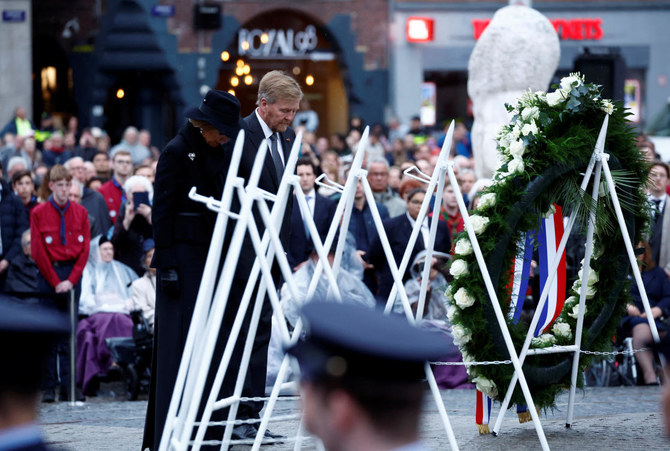
- Normally some 20,000 people attend the Dam commemoration
- Earlier this week municipal authorities announced unprecedented security measures to keep the ceremony safe and avoid possible disruptions linked to the Israel-Hamas war
AMSTERDAM: Dutch King Willem-Alexander and Prime Minister Mark Rutte joined around 4,000 people on Saturday for the country’s annual World War Two remembrance ceremony amid restricted public access and heightened security due to the war in Gaza.
The ceremony on Amsterdam’s central Dam square, with the traditional two minutes of silence at 8 p.m. (1800 GMT) to commemorate the victims of World War Two, passed smoothly despite fears that there might be protests.
Normally some 20,000 people attend the Dam commemoration without having to register. But earlier this week municipal authorities announced unprecedented security measures to keep the ceremony safe and avoid possible disruptions linked to the Israel-Hamas war.
At the opening of a Holocaust Museum in Amsterdam in March, pro-Palestinian protesters opposed to Israel’s military campaign in Gaza set off fireworks and booed Israeli President Isaac Herzog as he arrived on a visit.
Every town and the city in the Netherlands holds its own remembrance ceremony on May 4 and tens of thousands of people attend the events. The Netherlands then marks on May 5 the anniversary of its liberation from Nazi occupation in 1945.
Drone footage shows Ukrainian village battered to ruins as residents flee Russian advance
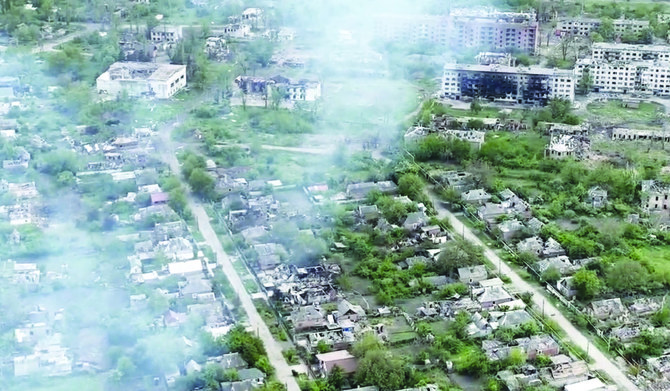
- Residents have scrambled to flee the village, among them a 98-year-old woman who walked almost 10 kilometers (6 miles) alone last week, wearing a pair of slippers and supported by a cane, until she reached Ukrainian front lines
KYIV: The Ukrainian village of Ocheretyne has been battered by fighting, drone footage obtained by The Associated Press shows. The village has been a target for Russian forces in the Donetsk region of eastern Ukraine.
Russian troops have been advancing in the area, pounding Kyiv’s depleted, ammunition-deprived forces with artillery, drones and bombs. Ukraine’s military has acknowledged the Russians have gained a “foothold” in Ocheretyne, which had a population of about 3,000 before the war, but says that fighting continues.
Residents have scrambled to flee the village, among them a 98-year-old woman who walked almost 10 kilometers (6 miles) alone last week, wearing a pair of slippers and supported by a cane, until she reached Ukrainian front lines.
FASTFACT
Ukraine’s military has acknowledged the Russians have gained a “foothold” in Ocheretyne, which had a population of about 3,000 before the war, but says that fighting continues.
Not a single person is seen in the footage, and no building in Ocheretyne appears to have been left untouched by the fighting. Most houses, apartment blocks and other buildings look damaged beyond repair, and many houses have been pummeled into piles of wood and bricks. A factory on the outskirts has also been badly damaged.
The footage also shows smoke billowing from several houses, and fires burning in at least two buildings.
Elsewhere, Russia has in recent weeks stepped up attacks on Kharkiv, Ukraine’s second-largest city, in an attempt to pummel the region’s energy infrastructure and terrorize its 1.3 million residents.
Four people were wounded and a two-story civilian building was damaged and set ablaze overnight after Russian forces struck Kharkiv, in northeastern Ukraine, with exploding drones, regional governor Oleh Syniehubov said Saturday.
The four, including a 13-year-old, were hurt by falling debris, he said on the Telegram messaging app.
Russian state agency RIA reported Saturday reported that Moscow’s forces struck a drone warehouse in Kharkiv that had been used by Ukrainian troops overnight, citing Sergei Lebedev, described as a coordinator of local pro-Moscow guerrillas. His comments could not be independently verified.
Syniehubov said Russia also bombed Kharkiv on Friday, damaging residential buildings and sparking a fire. An 82-year-old woman died and two men were wounded.
Ukraine’s military said Russia launched a total of 13 Shahed drones at the Kharkiv and Dnipropetrovsk regions of eastern Ukraine overnight, all of which were shot down by Ukrainian air defenses.



